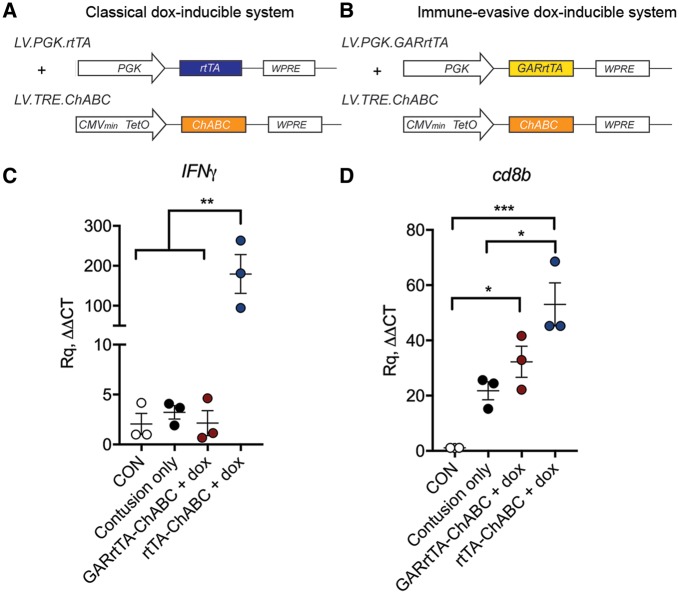Figure 1.
Doxycycline-inducible dual vector system for regulated delivery of ChABC with immune-evasive gene switch (dox-i-ChABC). (A and B) Linear diagram of lentiviral vectors used in a side by side comparison of two dual-vector dox-inducible systems for delivering the ChABC transgene, using either (A) a classical transactivator system (rtTA) or (B) a chimeric transactivator construct (GARrtTA) designed to evade recognition by T cells. (C) Expression of IFNγ in tissue immediately rostral and caudal to the injury epicentre at 2.5 weeks following contusion injury and intraspinal injection with rtTA-ChABC, GARrtTA-ChABC [and doxycycline (dox) delivery] or contusion only, relative to uninjured tissue (CON), revealed a dramatic increase in IFNγ expression in the classical rtTA group in comparison to all other groups [F(3,8) = 13.17, P = 0.0018, one-way ANOVA, Tukey’s post hoc]. (D) The expression of CD8b was upregulated by contusion injury and further increased in the rtTA group, but not when the ChABC transgene was delivered with the ‘stealth’ GARrtTA gene switch [F(3,8) = 18.18, P = 0.006, one-way ANOVA, Tukey’s post hoc], indicating differential immune response to these two regulated delivery systems. The immune-evasive GARrtTA dox-inducible vector (dox-iChABC) was used throughout the remainder of the study.

